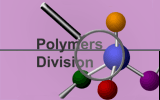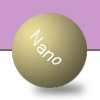| |
Focal Adhesions of Osteoblasts on Poly(d,l-lactide)/Poly(vinyl alcohol) Blends
by Confocal Fluorescence Microscopy
|
| |
Introduction
|
 |
Images of focal adhesions have often been used
as qualitative indicators of the viability of cells interacting
with biomaterials.
The objectives of this study were to develop a measurement method
to quantify focal-adhesion areas and to use the method to quantitatively
evaluate the viability of cells seeded on PLA /PVOH blends of
various compositions.
|
| |
Experimental Approach
|
 |
Approach
Cell-spread areas and focal adhesions of the cells seeded on
blend films were measured as indicators of biocompatibility.
|
| |
Rationale
Many cells develop two types of adhesions to surfaces: focal
adhesions, the tightest adhesions, with the separation of (10
to 15) nm, and close contacts with the separation of (30 to
100) nm.
Focal adhesions and related structures convey information across
the cell membrane, to regulate extracellular-matrix assembly,
cell proliferation, differentiation, and death.
Blend films of different compositions were prepared by casting
solutions of PLA and PVOH in hexafluoro-isopropanol.
Films were heated at 200 oC for 3 minutes under high vacuum,
and quenched to room temperature.
|
| |
Cell Culture
MC3T3E-1 osteoblast-like cells in MEM containing 10 % serum
were plated onto blend films at the density of 2 x 104 cells/well.
|
| |
Immunofluorescence
An anti-vinculin antibody and a fluorescent secondary antibody
were used to stain vinculin.
Stained cells were examined by confocal fluorescence microscopy.
|
| |
Results
|
 |
|
|
![The focal adhesions of the cells that were seeded on the blend films of intermediate compositions [(70 and 80) % in mass fraction of PLA] were less than those of the cells seeded on the blend films of other compositions, except 55 %.](image/Focal_Contacts_Osteoblasts-t.jpg) |
| |
 |
| |
The focal adhesions of the cells that were seeded on the blend
films of intermediate compositions [(70 and 80) % in mass fraction
of PLA] were less than those of the cells seeded on the blend
films of other compositions, except 55 %.
Focal-adhesion areas and cell-spread area can be used as quantitative
indicators of the biocompatibility of PLA/PVOH blends and other
biomaterials.
|
Future Activities
|
 |
|
Measurement of focal adhesions of cells in 3D matrices.
|
| |
Publications
|
 |
|
Transactions World Biomaterials Congress, p. 609 (2004).
|
| |
Contributors
|
 |
Francis W. Wang*
Chetan A. Khatri
En-Shinn Wu (UMBC)
Guang Lei Du (UMBC)
James H. Yen (ITL)
|
| |
| |
| |
| |
| |
| |
| |












